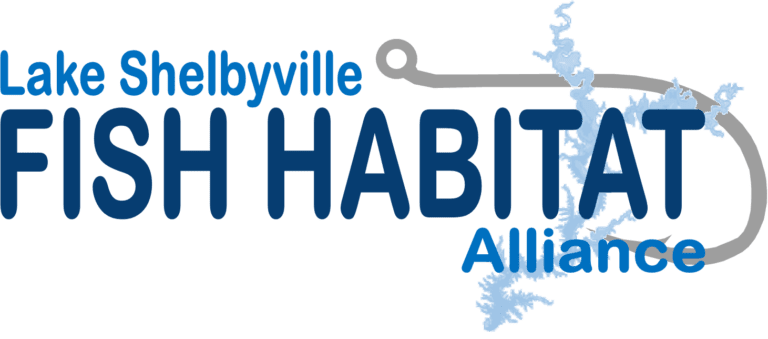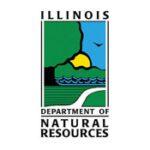Overview
-
Status
Ongoing -
Estimated Completion
2024 -
Location
Illinois -
Grants Received
$30,000 -
Total Budget
$104,315 -
Friends Group
Lake Shelbyville Fish Habitat Alliance -
Partners
U.S. Army Corps of Engineers, Illinois Department of Natural Resources
The goals of this project are to introduce long-lasting structural and biological habitat, inhibit shoreline erosion on highly eroded areas, inhibit mobilization of sediment and nutrients, and maintain connectivity of coves to the main lake. The benefits expected include; increased complexity and diversity of habitat for fish and other wildlife, decreased turbidity, siltation, and nutrient loading for improved water quality, improve deep water refuge availability during summer stratification, to provide increased density of priority game fishes and other desirable organisms for greater quality of experiences for anglers, hunters, ecotourists, and increase local business revenue for increased quality of life for all residents within the influence of the reservoir.
Photo Gallery
Why It Matters
Anglers are the most frequent user group on Lake Shelbyville. They and their families also comprise a high percentage of other user groups such as campers, boaters, hunters, ecotourists, and beach patrons for example. This makes preservation and enhancement of the quality of the lake’s fishery, water quality, and aesthetics even more important to stabilize and increase all area activities. The USACE already has very active programs highlighting environmental amenities, nature experiences, and wildlife-based activities and opportunities on lands adjacent to reservoir systems to engage and inform local communities and visiting public on the values and benefits of healthy reservoir systems which helps meet RFHP objectives.
Meeting the goals listed above will not only benefit the organisms and constituents that directly utilize the lake, but the entire community surrounding the lake. Greater user group participation on the lake due to improved angling quality, hunting opportunities, ecotourism, water quality, vegetation stabilization, and overall aesthetics, will restore Lake Shelbyville to a prime quality destination location. Although visitation is somewhat improved due to the improving economy, improvements to outdoor experiences will bring additional tourism and revenue to businesses in the area such as bait shops, marinas, gas stations, grocery stores, motels/hotels, resorts, camp grounds, federal, state, and municipal parks, and others, improving and stabilizing incomes. Increased incomes and stimulation of the local economy from additional outside users will benefit the entire community through increased tax base revenue. This provides a greater quality of life for all residents within the influence of the reservoir, as well as the direct and indirect user groups.
Improvements in the quality of experiences surrounding natural resource enjoyment gives these places greater value to primary users and secondary benefactors alike. Success of projects, like those proposed in this application, promotes greater participation in these activities providing even greater results, not only for Lake Shelbyville, but other reservoirs and impoundments as well. Success also shines a positive light on participating organizations, including RFHP and FOR. This allows for further opportunities to gain additional support and meet organization goals in this and on other reservoirs. Success also provides value to not only preserve but enhance facilities that provide even greater opportunity for participation in quality outdoor experiences. This reservoir already has 14 high quality boat ramps with numerous high-water ramps. Added value to, and use of, the reservoir will only provide impetus to maintain and enhance the facilities.
Threats
Lake Shelbyville is located in Shelby and Moultrie Counties of east-central Illinois. The dam site is located on the Kaskaskia River about one-half mile east of Shelbyville, Illinois. Much of the land in the Lake Shelbyville watershed is flat or gently sloping. However, the many small tributaries entering the river above the dam site have created ravines and valleys to form a very irregular shoreline. Many coves, both large and small, can be found as a result.
The lake is confined by relatively abrupt slopes and has many timbered arms with 172 miles of shoreline. The abrupt slopes and the erodible soils have resulted in shoreline erosion impacting project facilities.
The topography changes from a streambed elevation of about 535 feet NGVD to an elevation of 650 to 660 feet NGVD at the bordering uplands. Most of the valley slopes are covered with some virgin timber, but primarily second growth forest. The lake has a water surface area of 11,100 acres at joint-use pool elevation 599.7 feet NGVD. The pool at this elevation extends upstream from the dam approximately 20 miles and varies in width at this elevation from 0.25 to 1.0 mile. The depth of water from the valley floor at the dam to joint-use pool elevation is about 53 feet.
Shoreline erosion at Lake Shelbyville is caused by a combination of factors: fluctuating lake level, waves created by wind and boat actions, and the soil surrounding Lake Shelbyville being predominately glacial sandy clay with little resistance to erosion. Erosion was considered during project design to have minimal impact on pool storage in early years. However, because the last full sedimentation survey was conducted in 1984, there is no way of knowing exactly what that impact is today. The 1984 survey concluded that although the lake was estimated to lose 6.8% of its storage capacity in 50 years (by 2034), that rate of deposition was 2.5 times higher than original estimates. A sedimentation survey coupled with a revised shoreline erosion plan are needed to get a clearer picture of future needs.”
Due to the standard aging process, Lake Shelbyville (which has been impounded for 50+ years) has lost a significant portion of its woody habitat to natural forces. “Very little dead standing timber remains in coves as most have decayed over the last 40 years.” Long-duration floods, on occasion in excess of 12’, have further stranded woody habitat in uplands resulting in addition habitat loss. These floods have made conditions difficult for aquatic macrophytes to establish without help. This lack of habitat and associate erosion and reduced water quality are affecting the quality of the fishery significantly and efforts to replenish and develop habitat have not kept up with losses. Standard management practices help maintain the quality of the fishery, but the standard reduction in quality with reservoir age continues with rippling economic effects throughout the community and region.
Dr. Gary Owen Dick, Research Ecologist, from the U.S. Army Corps of Engineers Research and Development Center (ERDC), Lewisville Aquatic Ecosystem Research Facility (LAERF) visited Lake Shelbyville in May 2013. He completed an evaluation of the aquatic plant community and general habitat and water quality of the lake and stated in his report: “The failure of native vegetation to establish naturally in the lake thus far is due to an absence of propagules needed for colonization and abiotic (flood management, etc.) and biotic (herbivory, etc.) factors that limit establishment of the few propagules that may be introduced into the lake. This has resulted in a poorly developed natural resource.”
What FOR Is Doing
The objectives of this project are to continue the introduction of long-lasting structural and biological habitat to Lake Shelbyville. This will be accomplished through a combination of habitat editions (PVC cube/ artificial stump structures) and plantings of aquatic/semi-aquatic vegetation, both directly on shorelines as well as on artificial floating islands designed to be planted with a high density of vegetation. The artificial floating islands will not only provide a small area of vegetation with various habitat and water quality benefits, but will also provide a long-lasting source of seed to the surrounding area that will germinate when conditions are conducive.
The benefits of these additions include; increased complexity and diversity of habitat for fish and wildlife, decreased turbidity, siltation, and nutrient loading for improved water quality, and improve deep water refuge availability during summer stratification. This will provide increased density of priority game fishes and other desirable organisms for greater quality of experiences for anglers, hunters, ecotourists, and increase local business revenue for increased quality of life for all residents within the influence of the reservoir.
Success of the project will be gauged primarily by improved quality of the fishery, fish use of habitat structures, and secondarily by water quality improvements, bank stabilization, and reduced sedimentation.
Methods
The project will provide deliverables that include (depending on material donations, which have historically been high): a minimum of 100 Shelbyville cubes (8,000 ft3), at least 50 Georgia cubes (2,000 ft3), 25 artificial stumps (500 ft3), and 4,500 ft2 of planted shoreline (likely much more). These structures will be added to the already deployed: 900+ Shelbyville cubes (64,560 ft3), 350+ Georgia cubes (13,840 ft3), 300+ artificial stumps (5400 ft3), 4,000ft2 of planted area, 18 rock reefs (98,000 ft3), and approximately 5,000 feet of severely eroding lake shoreline that has been stabilized with riprap.
These products are anticipated to primarily benefit the following species, but will in effect benefit a much wider diversity of organisms: Largemouth bass (all life-stages), white crappie, black crappie, muskellunge, walleye, channel catfish, flathead catfish, white bass, sauger, bluegill, smallmouth bass, yellow bass, freshwater drum, and gizzard shad, epiphytic insect larvae, and epiphytic invertebrates, zooplankton, and phytoplankton. Secondary benefits of aquatic plants and greater fish and invertebrate density are expected for Unionid mussels, waterfowl, shorebirds, passerine and wading birds, a variety of aquatic and terrestrial mammals, reptiles, amphibians, crustaceans, grazing and pollinator insects, and a multitude of invertebrates. Stabilization of sediment and shorelines will also benefit a wider diversity of emergent and terrestrial vegetation, than simply those introduced.
Anglers are the most frequent user group on Lake Shelbyville. They and their families also comprise a high percentage of other user groups such as campers, boaters, hunters, ecotourists, and beach patrons for example. This makes preservation and enhancement of the quality of the lake’s fishery, water quality, and aesthetics even more important to stabilize and increase all area activities. The USACE already has very active programs highlighting environmental amenities, nature experiences, and wildlife-based activities and opportunities on lands adjacent to reservoir systems to engage and inform local communities and visiting public on the values and benefits of healthy reservoir systems which helps meet RFHP objectives.
Meeting the goals listed above will not only benefit the organisms and constituents that directly utilize the lake, but the entire community surrounding the lake. Greater user group participation on the lake due to improved angling quality, hunting opportunities, ecotourism, water quality, vegetation stabilization, and overall aesthetics, will restore Lake Shelbyville to a prime quality destination location. Although visitation is somewhat improved due to the improving economy, improvements to outdoor experiences will bring additional tourism and revenue to businesses in the area such as bait shops, marinas, gas stations, grocery stores, motels/hotels, resorts, campgrounds, federal, state, and municipal parks, and others, improving and stabilizing incomes. Increased incomes and stimulation of the local economy from additional outside users will benefit the entire community through increased tax base revenue. This provides a greater quality of life for all residents within the influence of the reservoir, as well as the direct and indirect user groups.
Improvements in the quality of experiences surrounding natural resource enjoyment gives these places greater value to primary users and secondary benefactors alike. Success of projects, like those proposed in this application, promotes greater participation in these activities providing even greater results, not only for Lake Shelbyville, but other reservoirs and impoundments as well. Success also shines a positive light on participating organizations, including RFHP and FOR. This allows for further opportunities to gain additional support and meet organization goals in this and on other reservoirs. Success also provides value to not only preserve but enhance facilities that provide even greater opportunity for participation in quality outdoor experiences. This reservoir already has 14 high quality boat ramps with numerous high-water ramps. Added value to, and use of, the reservoir will only provide impetus to maintain and enhance the facilities.
Monitoring Plan
Success of the project will be gauged primarily by improvements in the quality of the fishery, fish use of habitat structures, and secondarily by water quality improvements, bank stabilization, and reduced sedimentation.
Incidentally, the Illinois Natural History Survey’s Kaskaskia Biological Station, located immediately on Lake Shelbyville, is conducting a study on the use of the artificial habitat structures we have placed in the lake by various fish species. They are evaluating structures using standard electrofishing, deep-water electrofishing, and sonar (side-scan and Livescope sonar)Their evaluations will provide a wealth of information about best management practices (BMPs) in designing and placing fish habitat structures for maximum results. They will also provide additional data to support changes in the fish population, invertebrate communities, and basic water chemistry parameters through their various projects on the lake.
IDNR will annually conduct standardized fish population surveys and stocking success surveys each fall to evaluate changes in fish populations. Parameters easily measured during the time frame of this project include changes in density, size structure indices, and body condition. Species readily evaluated would include primarily largemouth bass, crappie, and muskellunge due to their relative ease of sampling and reliance on the physical and biological habitat being introduced. Goals of CPUE, size structure indices, and body condition are listed in the management plan for the lake. Anecdotal evidence will also be collected from the numerous fishing guides, tournament directors, and anglers who fish around these various habitat additions.
Plantings will be monitored on a regular basis (monthly at minimum, more during the growing season). The artificial floating islands will be closely monitored (every 2 weeks minimum) to evaluate success and monitor for depredation. Willow plantings will be monitored the spring following their planting, and on a monthly basis during the growing season to monitor for survival, growth, and to monitor for depredation.
Measurements of water quality changes will be difficult to obtain on such a large and highly fluctuating reservoir. USACE monitors water quality parameters and those will be followed and evaluated. INHS will likely obtain water quality measurements in treatment versus “control” coves.
Outreach Plan
The Lake Shelbyville Fish Habitat Alliance has an established Facebook page with frequent updates, as well as a monthly newsletter that is disseminated by email and facebook. The USACE has an established Facebook page and webpage in which we will post updates. The IDNR has two Facebook pages that will post updates. Local businesses, Chip’s Marine, Friends of Lake Shelbyville, and fishing clubs post updates on their Facebook pages and/or websites. We continue to provide information and encourage them to continue to publicize our activities, include grant awards from the organizations mentioned above and others.
We will arrange news conferences to announce major grants, and already utilize press releases distributed to a wide ranging list through the USACE to make announcements about this project and hold an annual “State of the Lake” in April, highlighting habitat projects and partnerships. We have and will continue to make radio show appearances to promote and update these efforts and contributors.
Banners were placed at all major boat launches around the lake in 2021 to publicize the habitat project and to thank our partners, including FOR and RFHP.
We have encouraged participation by anglers in habitat events by delaying the availability of new habitat maps online and only providing maps of new attractor locations to anglers who help with a build. The utilization of a fish attractor “Placement Committee” made up of local anglers and guides promotes “buy-in” as input from some the most knowledgeable anglers on the lake help dictate the locations where habitat structures are placed. This committee is still being added to as opportunity permits.
The LSFHA has held an Annual Fish Habitat Banquet with overwhelming success, raising over $20,000 at each event with 100% of profits going towards habitat improvement projects.
The LSFHA works with several area schools to promote participation by youth, including providing materials for students to build cubes themselves, and then participate in the subsequent placement of those cubes. LSFHA plans to continue discussions with Shelbyville High School to have their agriculture program (with a greenhouse) raise aquatic plants for shoreline and artificial vegetated island plantings. Plans were made to begin this program in 2020 but were derailed by the Covid-19 pandemic. We hope to get plan ironed out to possibly begin this program in Fall of 2021.
Related News
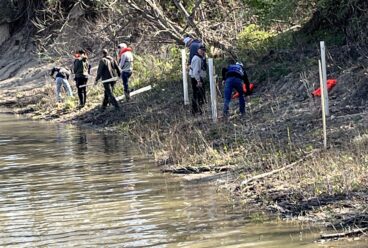
Lake Shelbyville Fish Habitat Alliance Working Hard this Spring!
Excellent work from the Friends chapter at Lake Shelbyville, Illinois! This spring, they planted 80 cypress trees as well as designed a new cube. Check it out!
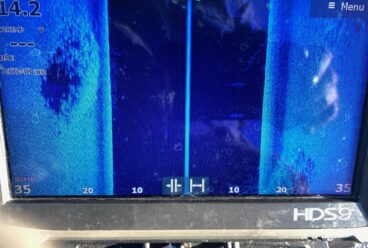
Project Update: Rock Piles at Shelbyville Look Good!
Many thanks and congratulations to the wonderful Lake Shelbyville Fish Habitat Alliance for their efforts! Look at those gorgeous rock piles, just waiting to be fished. We finally got the […]
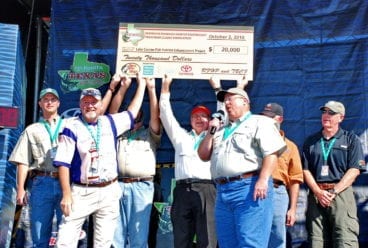
Project Information Available for FY2023 Approved Grants
Want to learn more about the FY2023 Approved Projects? Friends of Reservoirs has five large grant projects funded this year. Learn more about them, and please reply with any questions! […]
Donate Today
to support similar habitat projects


